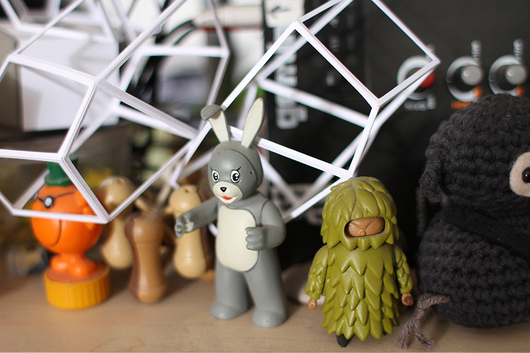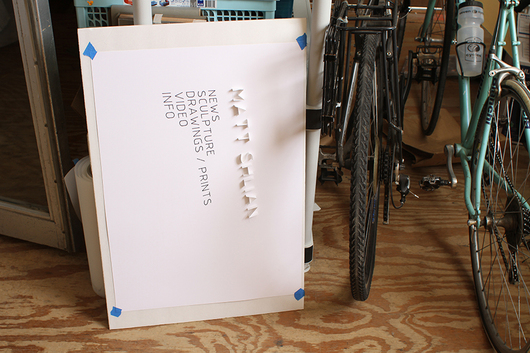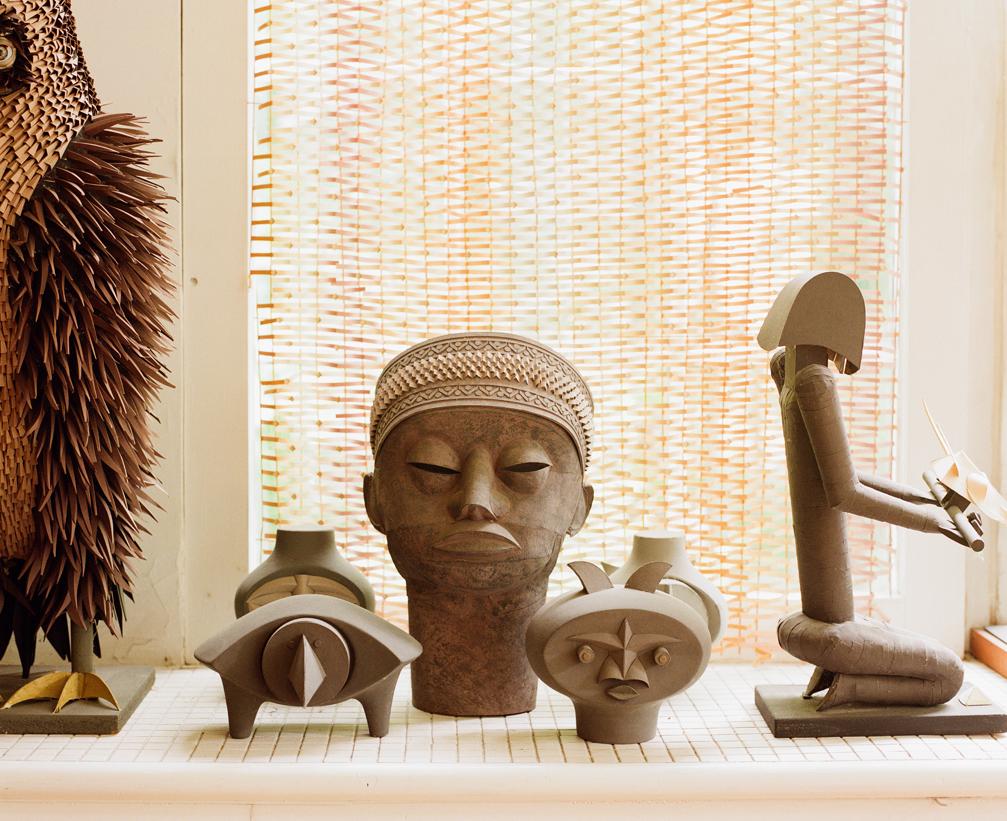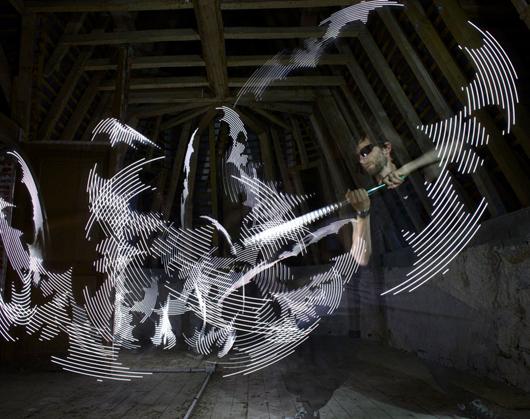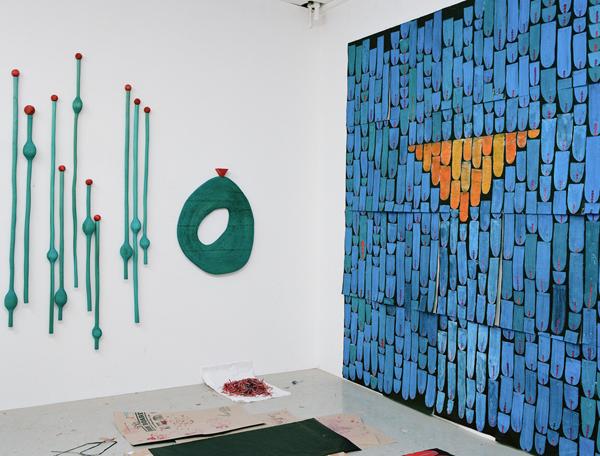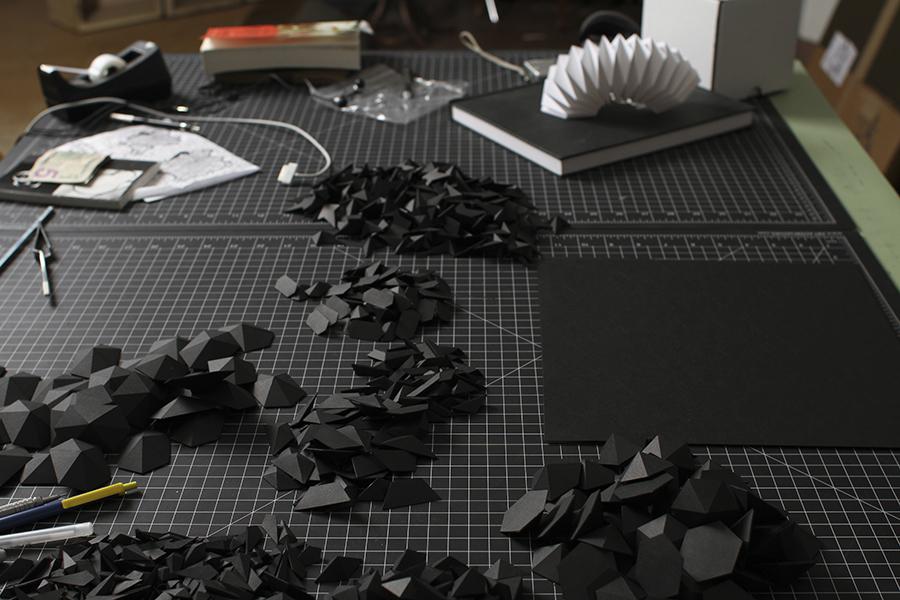
06.27.13
Studio Visit
Matthew Shlian, Paper Engineer
Knowing what we do about Matthew Shlian, it’s hard to believe that the Ann Arbor, Michigan–based artist ever thought he wanted to be a ceramicist. Ceramics is a medium of imprecision and risk, full of frequent failure and a high degree of unknowability. Shlian, on the other hand, can be found these days doing one of three things, each of which requires an almost uncanny amount of precision: drumming; working with scientists at the University of Michigan using paper to visualize structures at the micro and nano scales; or folding and gluing paper into intricate sculptures that range from 11×11-inch editions for Ghostly International to an 8-foot installation in the window of a New York Levi’s flagship. “I’ve always loved geometry,” Shlian says. “I understand spatial relations and I can envision the leap from 2D to 3D pretty easily. That kind of led the way to paper, and paper became the medium by which to execute a lot of my ideas.”
Shlian’s best known in the design world for his series for Ghostly (which he can be seen assembling in the studio visit here, photographed by Cullen Stephenson) but he’s also been using his paper skills behind the scenes for less artistic ends for years. We recently spoke to Shlian about what exactly defines a paper engineer and how it’s landed him everything from a TED talk to a gig on Sesame Street.
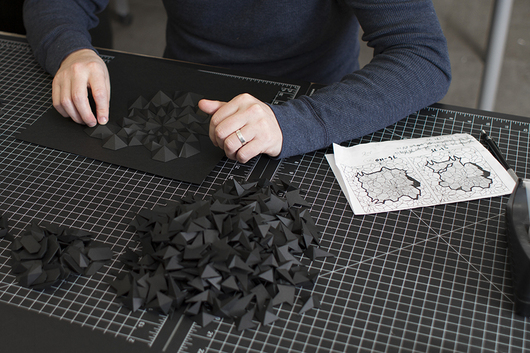
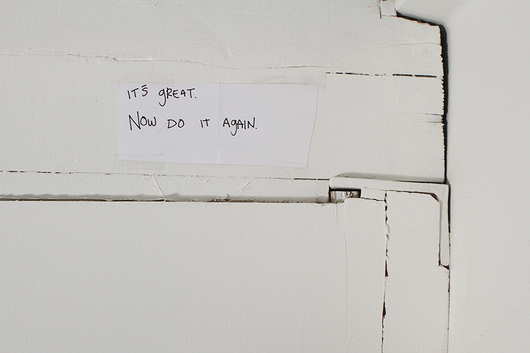
So tell me, how exactly does one become a paper engineer?
I went to school for ceramics and quickly realized I actually wanted to do everything. It was one of those programs where you didn’t have to pick a major, and by the time I graduated, I had a dual focus in ceramics and printmaking. The work I was doing was rooted in things like pop-up books, but I didn’t know that at the time. I thought I was inventing all of these mechanisms. The faculty would buy me pop-up books and would dissect them and try to figure them out. I wrote to Robert Sabuda, who’s this amazing pop-up guru; I wanted to be his apprentice. He doesn’t take apprentices, of course — everything in the pop-up world is super top secret” — but he told me there was a company in Connecticut called Structural Graphics that did direct mail pieces and pop-up books and greeting cards with paper mechanisms. And they hired me. That’s where I got my formal training as a paper engineer.
But eventually I got burned out doing stuff for car companies and soda companies. I knew the work I was making in my free time had more potential than selling objects; I knew I could do gallery stuff but I thought there was potential in architecture and packaging. So I went to Cranbrook for graduate school. That’s how I ended up in Michigan.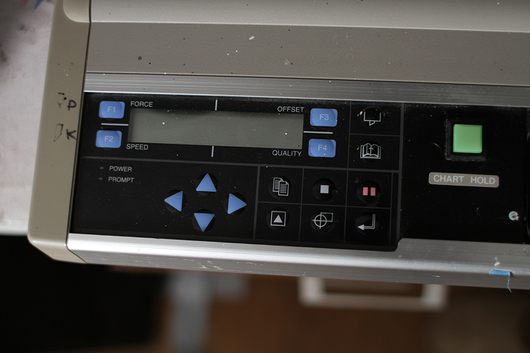
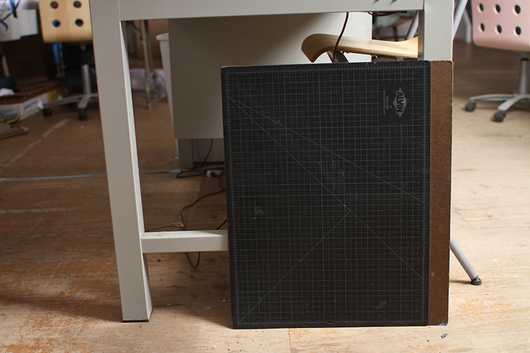
Were your parents artists? Where do you think this inclination comes from?
No, my Dad’s an accountant and he doesn’t get it at all. My mom works with special needs kids, and she’s super creative. But my grandfather was a tinkerer and an engineer. He died before I was born, but I was in the basement once and found all of these bizarre sculptures, like coins cut in half and joined together. I was like who built this?! He built pendulums and shit, and I was like hello? So maybe it came from that. As a kid I loved taking things apart and drawing.
What are some of your current influences?
I’m inspired by a lot of different things: architecture, Islamic tile designs. I work with scientists so I’m always looking at things under the microscope; I’m a drummer so when I make a piece, there’s a rhythm and a repetition not too dissimilar from making a beat.
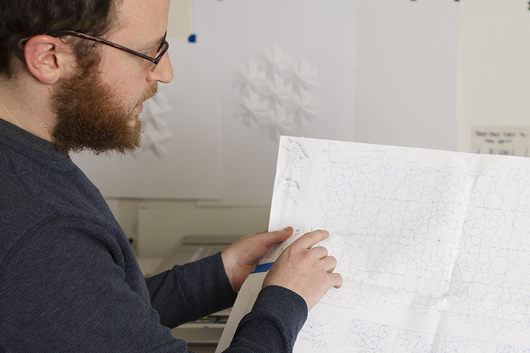
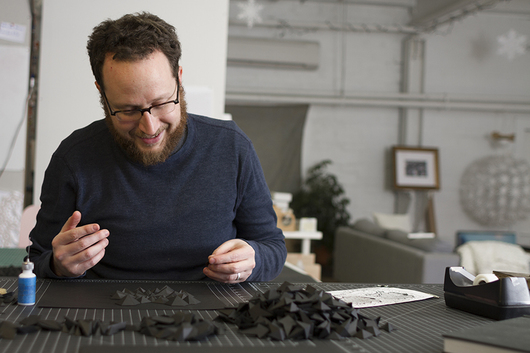
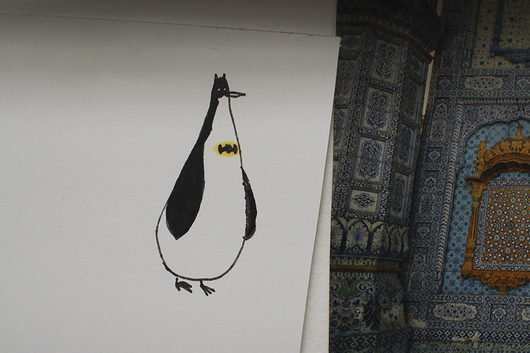
How did you get involved with Ghostly?
I was invited to do a TEDx talk, and [Ghostly founder] Sam Valenti was there. He was like we should do something together. At the time he was realizing that people wanted music but they didn’t want to buy a CD. So it started under the pretext of you’d get this art piece with a download code. But pretty people just wanted to buy the art objects. I’ve done five or six series with them now. The first series we did sold out in two or three days.
Can you take me through the process of making something like a Ghostly piece?
Usually pieces start out with play. I’m always thinking about pattern and form and playing with material. A lot of my work is just using white paper and a certain type of fold. Maybe I’m only using prisms, or curved cut forms. I’m trying to see what can I do within a series of limitations. I work a lot better with restriction.
So I might start with paper and if what I’m trying to do actually works, then I move to the computer. I work primarily with a really old version of AutoCAD to run this plotter cutter. It’s like a laser cutter but instead it has a titantium die. What I have on screen, it can cut up and then it’s up to me to fold it and glue it and assemble it. I don’t do a whole lot of 3D modeling. I work in flat space, and then I fold it up.
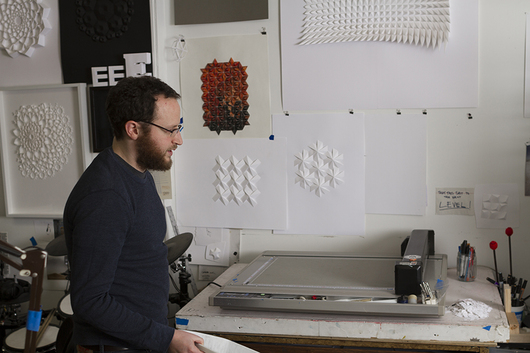
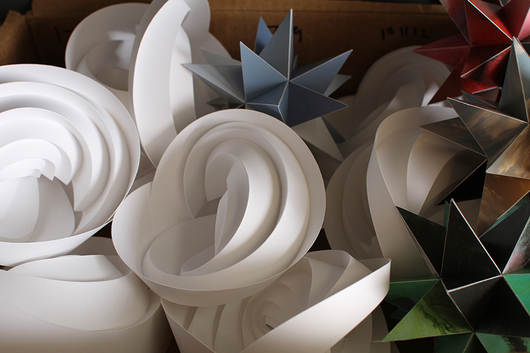
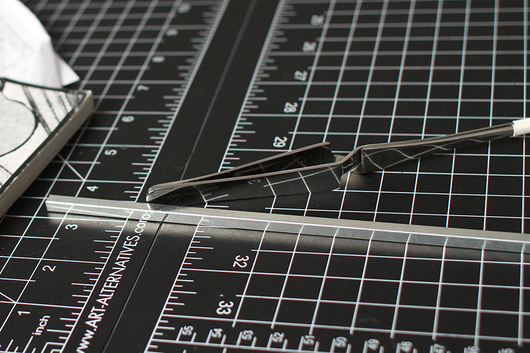
Do you have a favorite kind of paper? Did you go through several permutations to find the right one?
In some ways, it depends on what the piece is going to do or how it has to exist. If it’s moving or motorized, I use a lot of Tyvek, like the Fed Ex envelopes. I’ve been using it lately for large installation-type pieces. It holds its form better and it’s super durable. Then depending on the project, there’s a white paper stock I really like called Fox River Coronado, which is by Neenah. It’s just lovely. It’s super bright white, it’s acid-free archival. It doesn’t have a grain direction, which is nice. I use 100 lb text weight and a 10 pt cover, which is like a cardstock. I’ve also been using a lot of black paper, a Strathmore that has a nice tooth to it.
What’s the weirdest place that paper engineering has taken you?
I was on Sesame Street in April. The word of the day was “sculpture,” so they filmed me showing students how to fold paper, and we made big collaborative piece. I’ve also been doing stuff for Apple. It’s secret right now, but it’s like cutting-edge prototyping — trying to eliminate foam and find alternative ways to package stuff. I’ve been playing around with finding ways of nestling the products or creating pleating systems to reduce impact. But I like to make things overcomplicated, and they don’t have machines for that.
